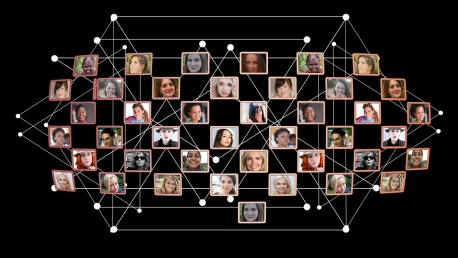The recent decision by the Society for Human Resource Management (SHRM) to eliminate “equity” from its diversity, equity, and inclusion (DEI) initiatives has sparked a significant debate among HR professionals and the broader public. This change aims to address the perceived confusion around the term “equity,” but it has also brought forward various concerns about the ramifications for workplace inclusion.
Understanding SHRM’s Decision
The Rationale Behind the Rebrand
SHRM announced it would drop the “E” for equity from its DEI initiatives, with CEO Johnny C. Taylor Jr. explaining that the decision stemmed from confusion and divisiveness surrounding the term “equity.” This move, according to Taylor, is intended to allow for clearer and more measurable outcomes in DEI programs. The organization believes that focusing on “inclusion” alone will address current program shortcomings more effectively. Taylor noted that the terms diversity and inclusion carry more universally accepted definitions, whereas equity often becomes a contentious point, muddying the overall goals of DEI efforts.The core of SHRM’s argument is that equity means different things to different people, leading to divisiveness and confusion that hampers effective implementation. By removing that term, SHRM aims to create a more streamlined and unified approach to fostering workplace diversity and inclusion. However, Taylor also emphasized that altering the label does not mean the organization is stepping back from its commitment to equitable practices. Instead, the intention is to build a framework where inclusion can act as a comprehensive umbrella term for all equity-related activities. This perspective aims not to diminish the importance of equity but to remove obstacles that may prevent DEI programs from achieving their objectives.
Immediate Reactions and Criticisms
The announcement provoked immediate backlash from HR professionals and diversity advocates, who took to social media platforms to express their discontent. Many critics labeled the decision as “reactionary” and accused SHRM of caving to political pressure, arguing that the exclusion of “equity” undermines the core principles of DEI initiatives. This reaction highlights deep divides within the HR community about the best approach to fostering an inclusive workplace. Industry professionals argued that equity is vital for addressing systemic inequalities that mere diversity and inclusion efforts cannot mitigate.The online uproar serves as a testament to the complexity and sensitivity surrounding DEI discussions in today’s polarized environment. Critics argue that by dropping the term “equity,” SHRM is failing to confront the root of workplace disparities, instead opting for a more palatable but less effective solution. These critics contend that focusing solely on inclusion without an explicit emphasis on equity overlooks the unique challenges faced by marginalized groups. The decision has been viewed as a step backward, especially in a climate where organizations are increasingly expected to demonstrate their commitment to social justice and corporate responsibility.
The Political Context Surrounding DEI
Societal and Political Pressures
SHRM’s decision comes during a highly charged political climate. The timing is significant, as DEI programs are increasingly under scrutiny from political groups, particularly those on the right. Amid a volatile presidential election season, decisions from prominent organizations like SHRM are viewed within the broader context of societal debates concerning equity and inclusion. Political pressures have intensified as lawmakers and advocacy groups on both sides of the aisle weigh in on the principles that should guide corporate DEI strategies, adding another layer of complexity to the issue.Political influences are not limited to elected officials but extend to cultural commentators and media pundits who shape public opinion. The politicization of DEI initiatives has led to a fragmented landscape where terms like “equity” can become flashpoints for broader ideological battles. This charged atmosphere makes organizational decisions about DEI not just internal policy matters but public statements that can attract significant scrutiny and criticism. Consequently, SHRM’s move is seen as a nod to avoiding controversy, aligning its policy with a less contentious political stance, an approach that does not resonate well with all stakeholders.
Supreme Court’s Influence on Employment Law
Recent Supreme Court decisions, such as the overturning of the Chevron doctrine, add another layer of complexity to this issue. The removal of this precedent could lead to increased legal challenges against employment regulations, impacting various aspects of labor laws and making the regulatory environment more challenging for DEI initiatives. The Chevron doctrine had insisted that courts defer to federal agency expertise in interpreting ambiguous laws, but its demise opens the door for more stringent judicial scrutiny of employment-related statutes.This shift in the legal landscape has far-reaching implications. Without the Chevron doctrine, employers may face an onslaught of legal challenges that question the validity and enforcement of various workplace regulations, including those impacting DEI initiatives. As interpretative authority shifts from agencies to the courts, employers will have to navigate a more unpredictable legal environment. This could lead to increased litigation over the validity of DEI programs and potentially undermine efforts to create more inclusive workplaces. Organizations must now be more vigilant and adaptable, ensuring their DEI strategies can withstand legal scrutiny while continuing to promote equitable and inclusive environments.
Broader Trends in Workplace Dynamics
Evolutions in Labor Movements
The changing stance on DEI by SHRM is part of a broader trend in workplace dynamics. For instance, Samsung Electronics’ unionized workers in South Korea recently went on strike, highlighting ongoing labor tensions and the importance of equitable treatment in workplaces globally. Such labor actions underscore the global nature of the issues surrounding workplace equity, worker rights, and organizational responsibilities. Strikes and protests by workers are becoming more common as employees demand fair wages, reasonable working conditions, and equitable treatment.Similarly, other significant firms are realigning their workforce strategies in response to economic pressures, placing additional strain on DEI programs. Companies are caught in a balancing act, needing to cut costs and improve efficiency while also meeting the growing demand for social responsibility. This often results in workforce reductions, strategic realignments, and increased reliance on automation and AI-driven solutions. Each of these changes has a distinct impact on how DEI programs are perceived and implemented. The emphasis on performance and productivity tends to overshadow issues related to equity and inclusion, leading to concerns that DEI initiatives might be sacrificed in favor of economic imperatives.
Revamping DEI Strategies
Despite these tensions, companies are continuously re-evaluating their DEI strategies to better align with changing societal values and workforce demands. However, the removal of “equity” may complicate these efforts, as it is seen as a critical component for addressing systemic inequalities in the workplace. Without a focus on equity, DEI initiatives may fail to address the root causes of disparities, limiting their effectiveness in creating genuinely inclusive work environments. Organizations must strike a balance between addressing economic challenges and committing to comprehensive DEI strategies that address both diversity and equity.A nuanced approach to DEI requires recognizing the interconnectedness of diversity, equity, and inclusion. Removing equity from the equation may simplify the narrative but risks overlooking essential aspects of workplace fairness. The challenge lies in developing initiatives that are not only rhetorically inclusive but substantively equitable. Companies must ensure that their DEI strategies do not merely pay lip service to inclusion but actively work towards eliminating systemic barriers. This involves continuous employee education, transparent communication, and the development of metrics to measure progress in both diversity and equity.
Technological Advancements and Workforce Management
Investment in HR Technology
Even amid controversies, investments in HR technology continue to grow. Companies like SmartHR are receiving substantial funding to develop sophisticated HR management solutions. These technologies play a crucial role in modernizing workforce management systems and can potentially enhance the implementation of DEI initiatives by providing better data and analytics tools. Advanced technology allows organizations to track and analyze diversity metrics more effectively, pinpointing areas where equity and inclusion efforts need to be intensified.Investment in HR tech reflects a broader trend towards data-driven decision-making in workforce management. Tools powered by artificial intelligence and machine learning can offer insights into employee demographics, uncovering patterns of inequality and bias that might not be evident otherwise. By leveraging these tools, companies can build more equitable hiring practices, retention strategies, and career development programs. The focus on technology underscores the importance of a scientific approach to DEI, where data informs policies and actions, making them more targeted and effective.
Impact of AI on Jobs
Another significant factor is the rapid advancement of artificial intelligence and its impact on jobs. According to a McKinsey Global Institute study, a significant percentage of jobs in major metropolitan areas will be affected by generative AI by 2030. This underscores the need for ongoing adaptation and upskilling within the workforce, further complicating the landscape for DEI programs. As AI and automation reshape job roles and functions, there is an urgent need to ensure that these technological changes do not exacerbate existing inequalities.The integration of AI in the workplace raises critical questions about the future of work and inclusivity. While AI can bring about efficiencies and innovation, it can also lead to job displacement and widen existing socioeconomic gaps if not managed carefully. Organizations must adopt strategies that balance technological advancement with workforce development, ensuring that employees have the skills needed to thrive in a tech-driven environment. This involves continuous learning opportunities, equitable access to training programs, and a commitment to reskilling displaced workers. By focusing on these areas, companies can turn AI advancements into opportunities for inclusive growth rather than sources of inequality.
The Debate on Equity in DEI Initiatives
Arguments for Retaining Equity
Proponents of retaining equity argue that it is essential for addressing systemic and institutional biases that have historically disadvantaged certain groups. They believe dropping the term sends a message that these issues are being sidestepped, which can lead to a less inclusive work environment. Equity is seen as a fundamental component for achieving true diversity and inclusion, as it focuses on leveling the playing field and providing fair opportunities for all employees, particularly those from marginalized backgrounds.Equity addresses the underlying structural barriers that prevent certain groups from succeeding, making it an indispensable part of any comprehensive DEI strategy. Advocates argue that without a focused effort on equity, DEI initiatives risk becoming superficial measures that ignore the root causes of disparities. They emphasize that equity should not be seen as a divisive or problematic term but rather as a necessary target for creating a fairer workplace. By sidestepping equity, organizations might inadvertently perpetuate existing inequalities, thereby undermining their DEI goals.
Arguments for Focusing on Inclusion
Conversely, those in favor of focusing on inclusion argue that it is a broader term that encompasses a wider range of initiatives aimed at creating a welcoming environment for all employees. They suggest that the emphasis on inclusion can be more effective in addressing the immediate needs of diverse workforces without getting bogged down in the complexities of defining and measuring equity. Inclusion is perceived as a more actionable and less contentious approach, allowing organizations to foster a sense of belonging for all employees more readily.Those supporting this shift contend that focusing on inclusion can streamline DEI efforts, making them more accessible and easier to implement across different organizational levels. They argue that inclusion naturally leads to enhanced equity, as creating an inclusive environment requires addressing barriers and biases that hinder full participation. This approach aims to unify DEI initiatives under a single, comprehensive framework that promotes diversity and equal opportunities for all, without the divisiveness that sometimes accompanies discussions of equity.
Future Directions for DEI Programs
Adapting to Legal and Regulatory Changes
With the changing legal landscape, DEI programs must adapt to ensure compliance while still striving toward inclusive goals. Companies need to develop more robust frameworks that can withstand increased scrutiny and legal challenges while promoting diversity and inclusion within their organizations. This involves staying abreast of regulatory changes, understanding the implications of recent legal precedents, and ensuring that DEI strategies are resilient and adaptable.Organizations must invest in legal expertise and continuously review their DEI policies to ensure they align with both current laws and best practices. This proactive approach can help mitigate risks and ensure that DEI efforts remain legally sound while addressing the needs of a diverse workforce. As laws and regulations evolve, companies must be prepared to pivot and update their DEI strategies, ensuring compliance without compromising on their commitment to creating inclusive and equitable workplaces.
Embracing Technological Solutions
Leveraging technology will be central to the future success of DEI initiatives. Advanced data analytics, AI, and other HR tech tools can help organizations better understand their workforce demographics, identify gaps, and implement more effective DEI strategies. These technologies offer the potential to revolutionize how companies approach diversity and inclusion, providing actionable insights and facilitating data-driven decision-making. By embracing technological solutions, organizations can enhance the precision and impact of their DEI initiatives.For DEI programs to thrive in this increasingly digital age, integrating technology is not just beneficial but essential. AI and advanced analytics can identify patterns of discrimination and disparities, enabling companies to address these issues with evidence-based interventions. Furthermore, technology can automate routine DEI tasks, freeing up resources for more strategic initiatives. By harnessing the power of technology, organizations can create more dynamic, responsive, and effective DEI programs that are well-equipped to meet the challenges of the modern workplace.
Conclusion
The Society for Human Resource Management (SHRM) recently decided to remove “equity” from its diversity, equity, and inclusion (DEI) initiatives, sparking substantial debate among HR professionals and the general public. This decision is primarily driven by the intention to clear up perceived confusion surrounding the term “equity.” However, it also raises various concerns about the potential repercussions on workplace inclusion efforts.Supporters argue that “equity” is often misunderstood and conflated with equality, leading to ineffective implementation in organizational policies and practices. They believe the removal will streamline DEI initiatives and make goals clearer. Critics, on the other hand, contend that eliminating “equity” undermines the progress made in addressing systemic inequities in the workplace. They argue that equity is crucial for creating an environment where all employees have fair opportunities for success, taking into account varying starting points and individual needs.This change has ignited a broader discussion about the role of language and terminology in shaping effective DEI strategies. As organizations strive to foster inclusive environments, the choice of terms can significantly impact the effectiveness of their efforts. The debate around SHRM’s decision highlights the ongoing challenges and complexities in advancing workplace inclusion, and whether the simplification of terms might inadvertently sideline essential aspects of equity and fairness.









